Last weekend, I popped open my mini warehouse only to discover one of a car owner’s worst nightmares. One of my favorite cars, my 2008 Saturn Sky Red Line, had a seat with rapidly spreading mold. Sadly, this isn’t even the first time this has happened to me, but it’s now the fourth time. I’m tired of cleaning out mold, and now I’m wondering: How do I stop this from happening again?
If you’re a longtime reader, you may remember that, in 2022, I wrote a story about how my 2005 Smart Fortwo became filled with what I called “forbidden polka dots.” Right before I stored the car for the winter in 2021, I had an accident with a car cover that let about a gallon of water into the interior. I forgot to fully dry out the car before parking it, and my reward the next spring was a car that was full of mold.
My wife cleaned out the car, and it has been fine ever since. The mold has not come back. I haven’t even smelled the telltale scent of mold, either. Since then, I also haven’t had a problem with any of my other cars. I’d pop open my mini warehouse, drive away in whatever chariot I chose, and life would be good.
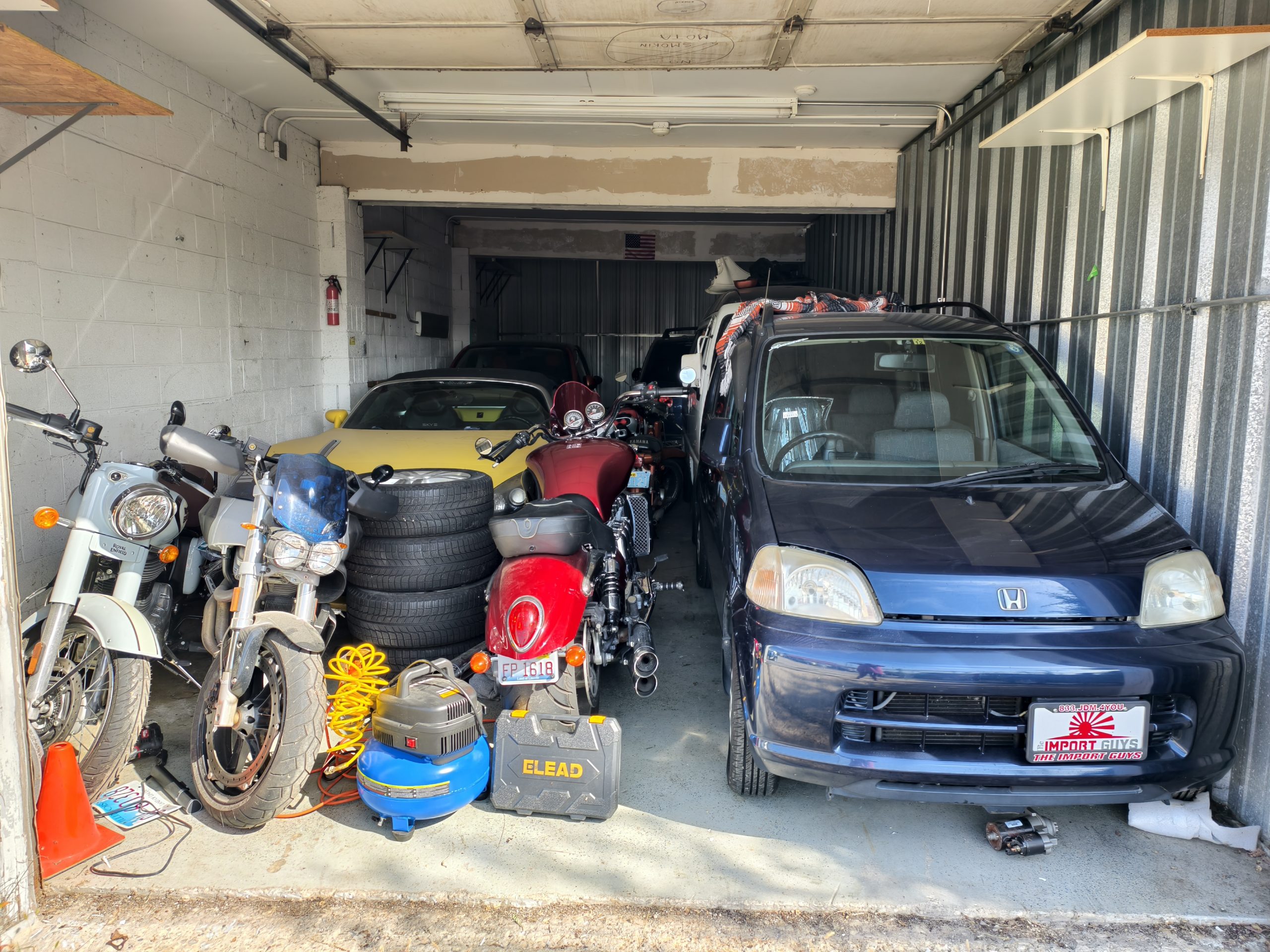
Something different must have happened this year, because it feels like I’ve been fighting a losing battle with mold this summer. I have found a grand total of three more of my cars with the stuff in them. I’m not exactly sure what’s going on, and I’m not entirely sure how to stop it.
Mold Is Nasty Stuff
Back in 2022, when I had the mold issue in my 2005 Smart Fortwo, there was an easy explanation: I was a goofball and stored a car with a gallon of water hiding under its carpet – a mold farm, basically.

The United States Environmental Protection Agency has a pretty good primer on mold:
Molds are a natural part of the environment and can be found almost anywhere that moisture and oxygen are present. They belong to the kingdom Fungi and live in moist places such as soil, plants and dead or decaying matter. Outdoors, molds play a part in nature by breaking down dead organic matter such as fallen leaves, dead trees and other debris; however, indoors mold growth should be avoided.
There are many types of mold – all of them need water or moisture to grow. When excessive moisture accumulates in buildings or on building materials, mold growth often occurs, particularly if the moisture problem remains undiscovered or unaddressed.
Molds spread by producing tiny reproductive cells called spores that waft through the air. Mold spores usually cannot be seen without magnification (ranging in size from 2-10 um) and are naturally present in both indoor and outdoor air. Some molds have spores that are easily disturbed and settle repeatedly with each disturbance. Other molds have sticky spores that will cling to surfaces and are dislodged by brushing against them or by other direct contact. Spores may remain able to grow for years after they are produced. In addition, whether or not the spores are alive, the allergens in and on them may remain allergenic for years.
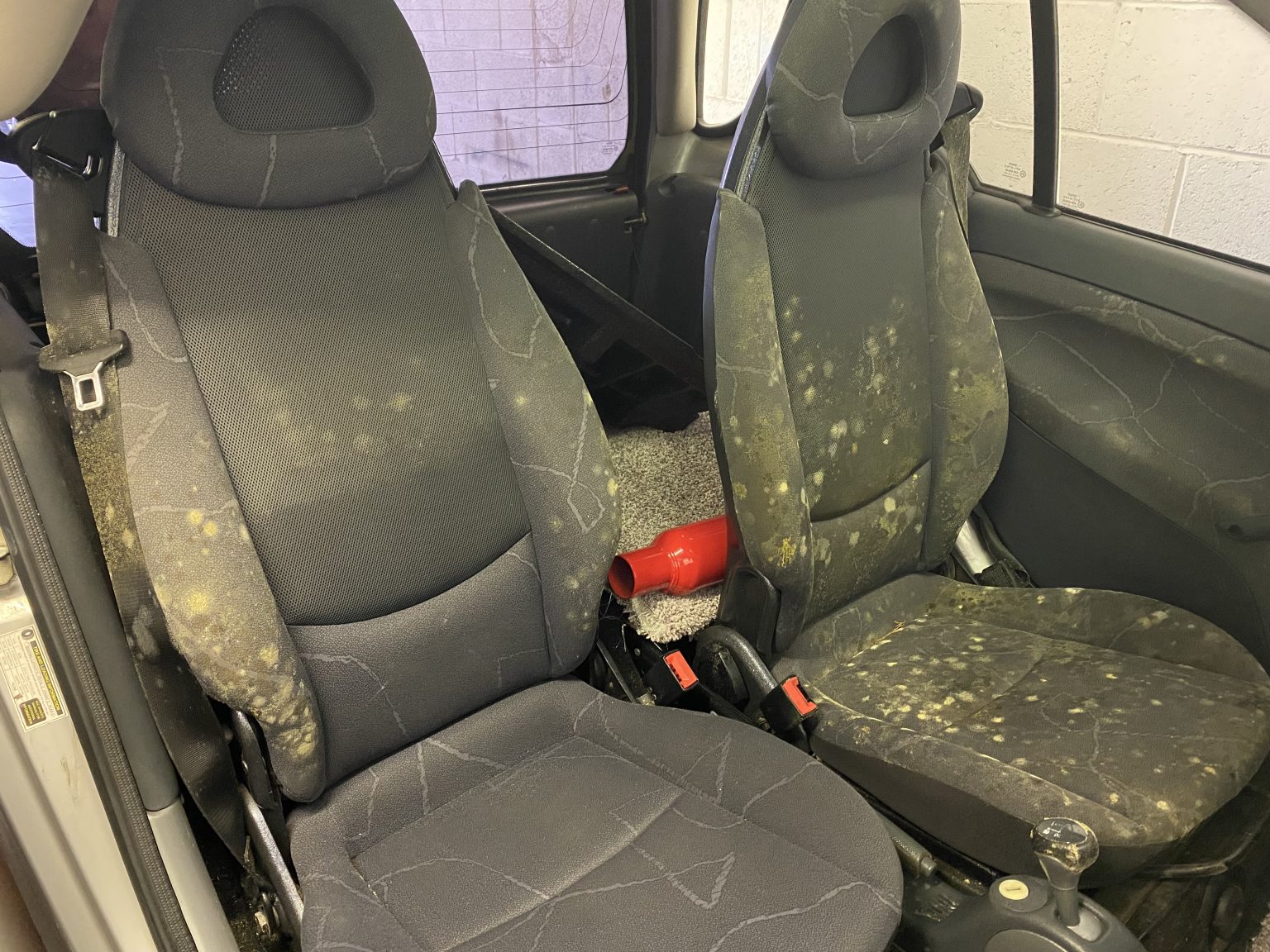
Yeah, mold is the stuff of nightmares. It’s also really bad for you, and can cause Asthma attacks, headaches, and, depending on how your body reacts to its environment, more serious issues.
Generally, mold requires four factors to grow: moisture, oxygen, a temperature between 40 degrees and 100 degrees, and a food source that contains cellulose. Mold will happily grow on walls, fabric, wood, leather – even paper, if you let it. Also, a quirk about mold is that simply exposing the mold to a temperature extreme might not be enough to kill it. Mold may go dormant in freezing or hot temperatures, but it is unlikely to die based on a temperature swing alone. Once conditions permit growth again, the mold will just kick back into action.
My Storage Situation
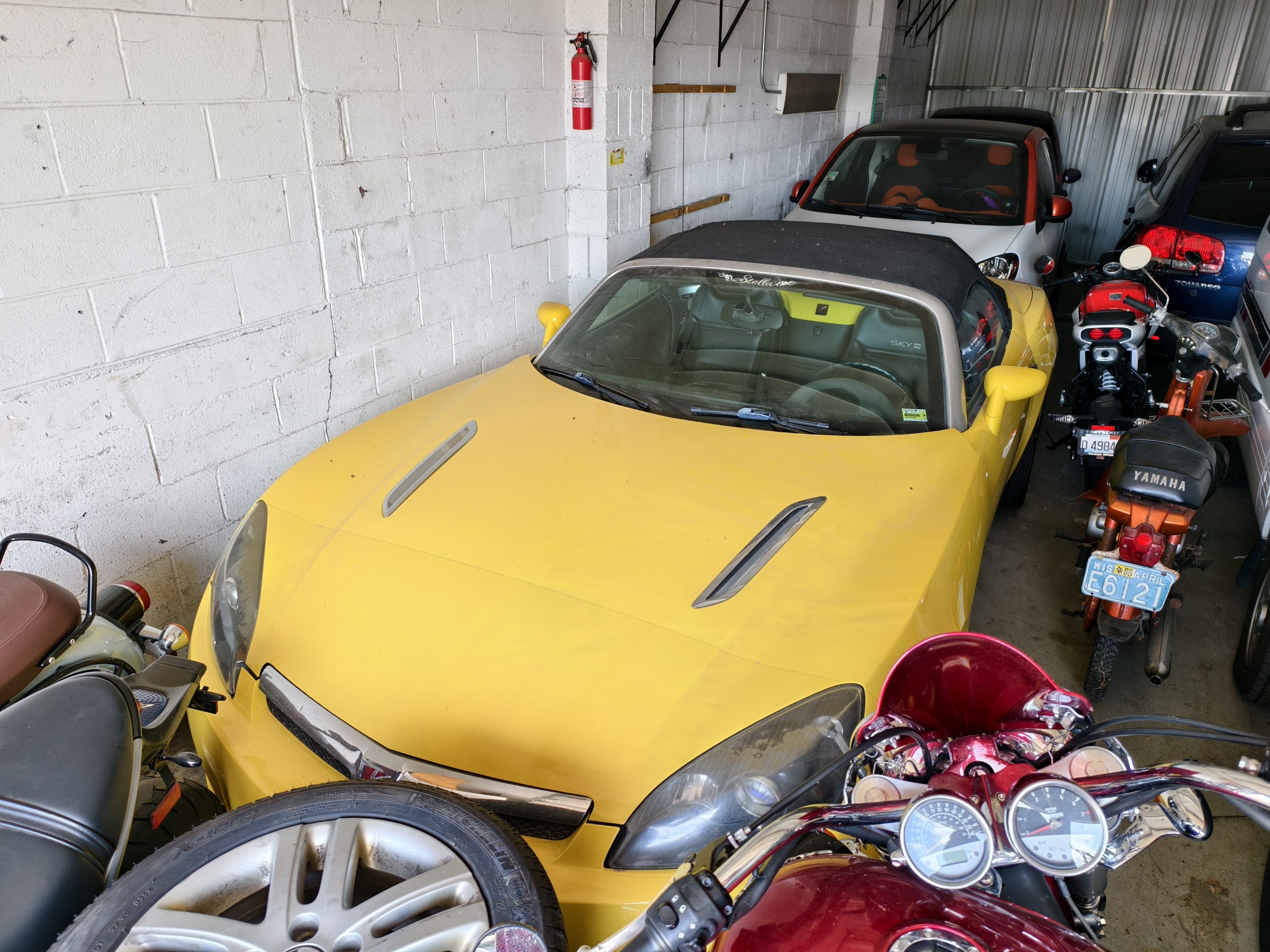
My mini warehouse is an interesting place. It sits maybe 500 feet from a lake and is more or less situated right in the middle of a chain of lakes. The area around my unit gets seriously humid. My warehouse also isn’t like a pole barn; the structure and floor of the building are concrete, and the roof appears to be not much different than what you’d find on top of an older commercial building. This is all to say that, based on the water stains on the ceiling in the building, this roof has leaked in the past. Likewise, the building gets extremely humid, just like the outside. So, at minimum, there’s a lot of water in the air. Also, spiders love this place, so I got that goin’ for me.
Here’s how Sheryl beat the crap out of the mold in my 2005 Smart:
Sheryl’s plan involves multiple prongs. The first involves this Bissell Little Green Pro cleaning machine. It injects searing hot water (or a chemical mix) into the surface that you’re cleaning and uses both brushing action and vacuum to get the job done. She combined it with RMR-86 Pro mold remover. The jug of RMR contains one of the active chemicals of bleach, among other harsh stuff.
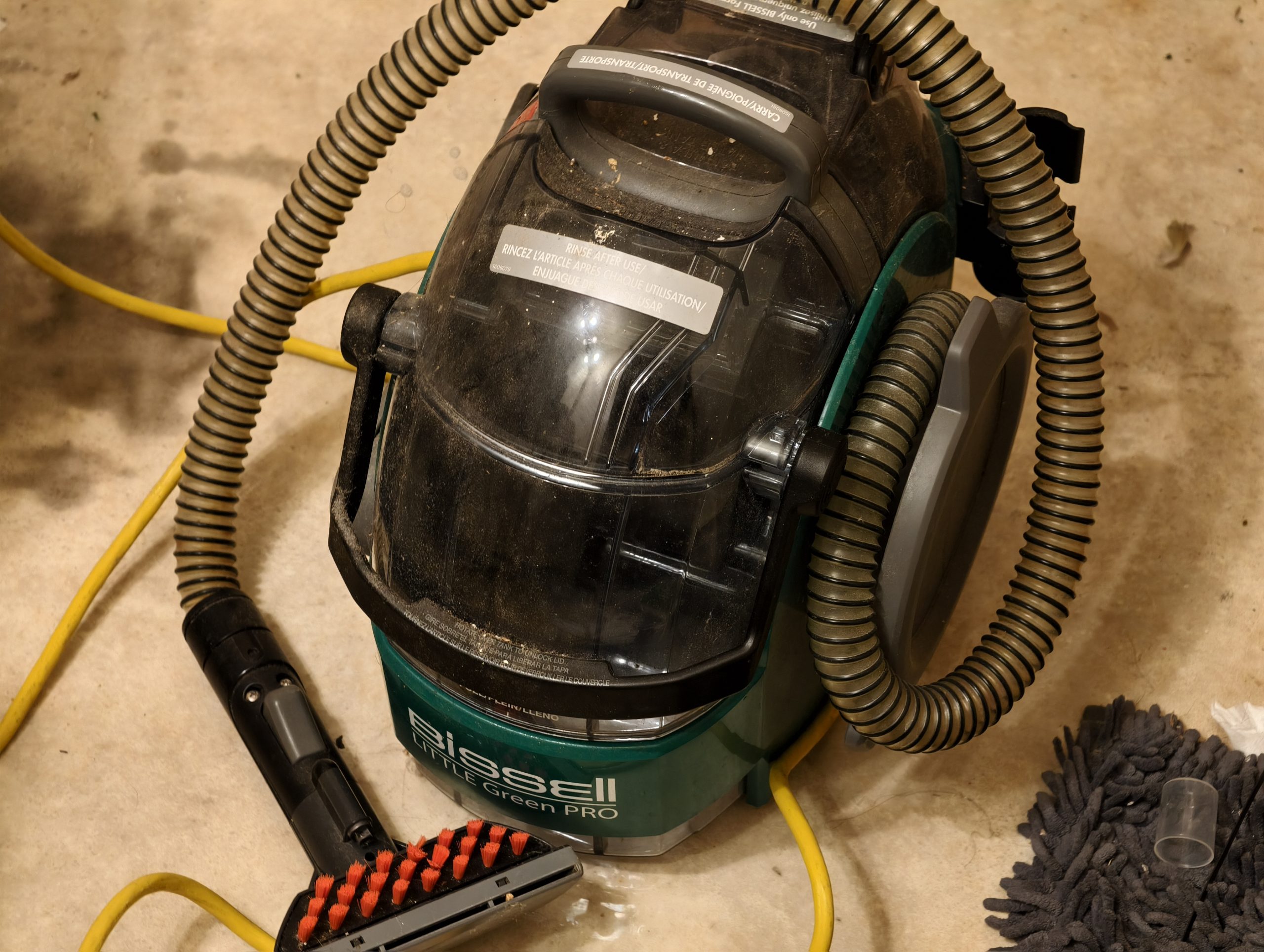
Sheryl made somewhat short work of the mold on the passenger seat. It took several passes and lots of scrubbing, but it took give or take an hour for her to be satisfied with the job.
[…]
Next came the driver seat, and she said that the growth on it was much worse. The seat bottom in particular required a lot of scrubbing to get through. However, after about two hours even it, too, looked extremely clean.

As I noted earlier, the mold hasn’t been back! So, this process worked out. I actually had doubts about this. It seems a lot of folks go hard on mold remediation, and remove their seats, dashboard, interior panels, and carpet to give them a ridiculously deep cleaning. Some folks straight up throw some of those parts away. Perhaps my car wasn’t bad enough to warrant tearing down the whole interior.
Here We Go Again
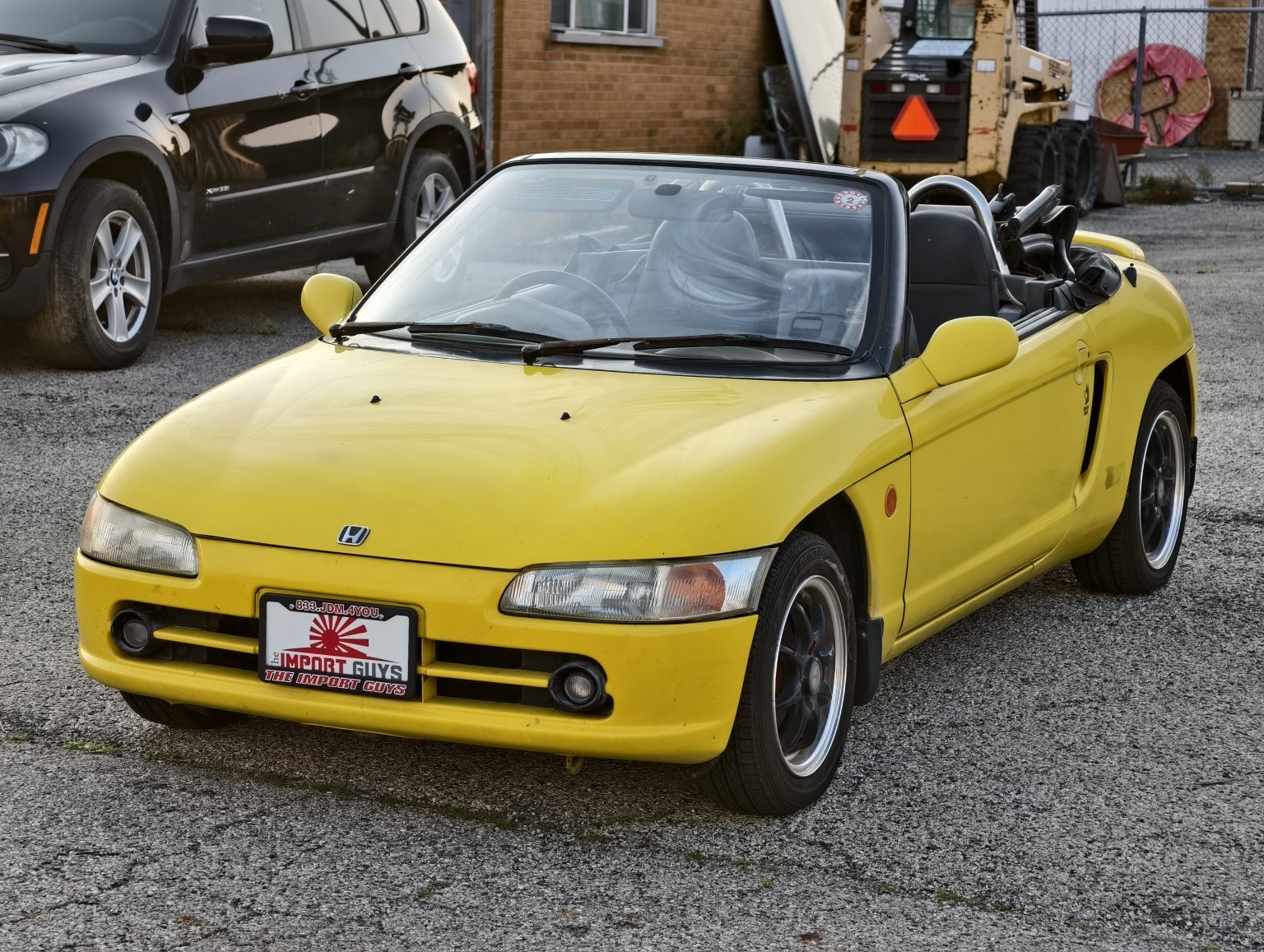
I figure the humidity supercharged the mold growth in that Smart. But I’m not entirely sure what happened this year with my other cars sprouting mold. Back in the spring, I excitedly attempted to drive my Honda Beat before finding its steering wheel covered in the fungi that are not fun guys. I cleaned up the mold with more of that RMR-86 stuff, monitored it for a while, and then sold the car.
Then, last week, I opened my unit hoping to drive my Saturn Sky Red Line, and was stopped hard by this sight:
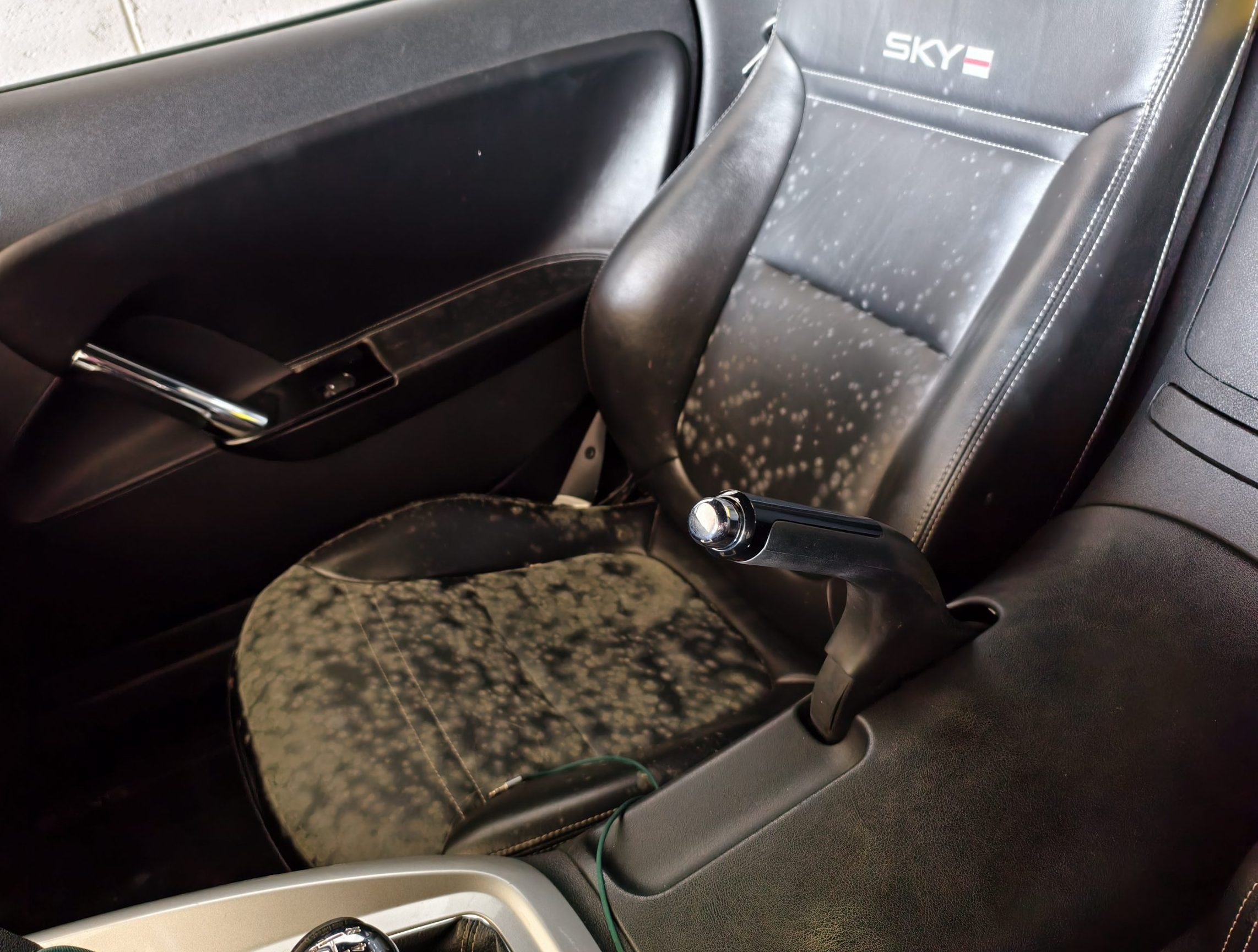
Crap.
This sent me into a panic, and I decided to check every other car in the unit. The 2006 Volkswagen Touareg V10 TDI was fine, as was the 2016 Smart Fortwo Edition #1, the 1997 Honda Life, and the 1989 Suzuki Every. All of the motorcycles were good, too. The only other troublemaker was the 2006 Smart Fortwo CDI, which had one little moldy dot on its driver seat.
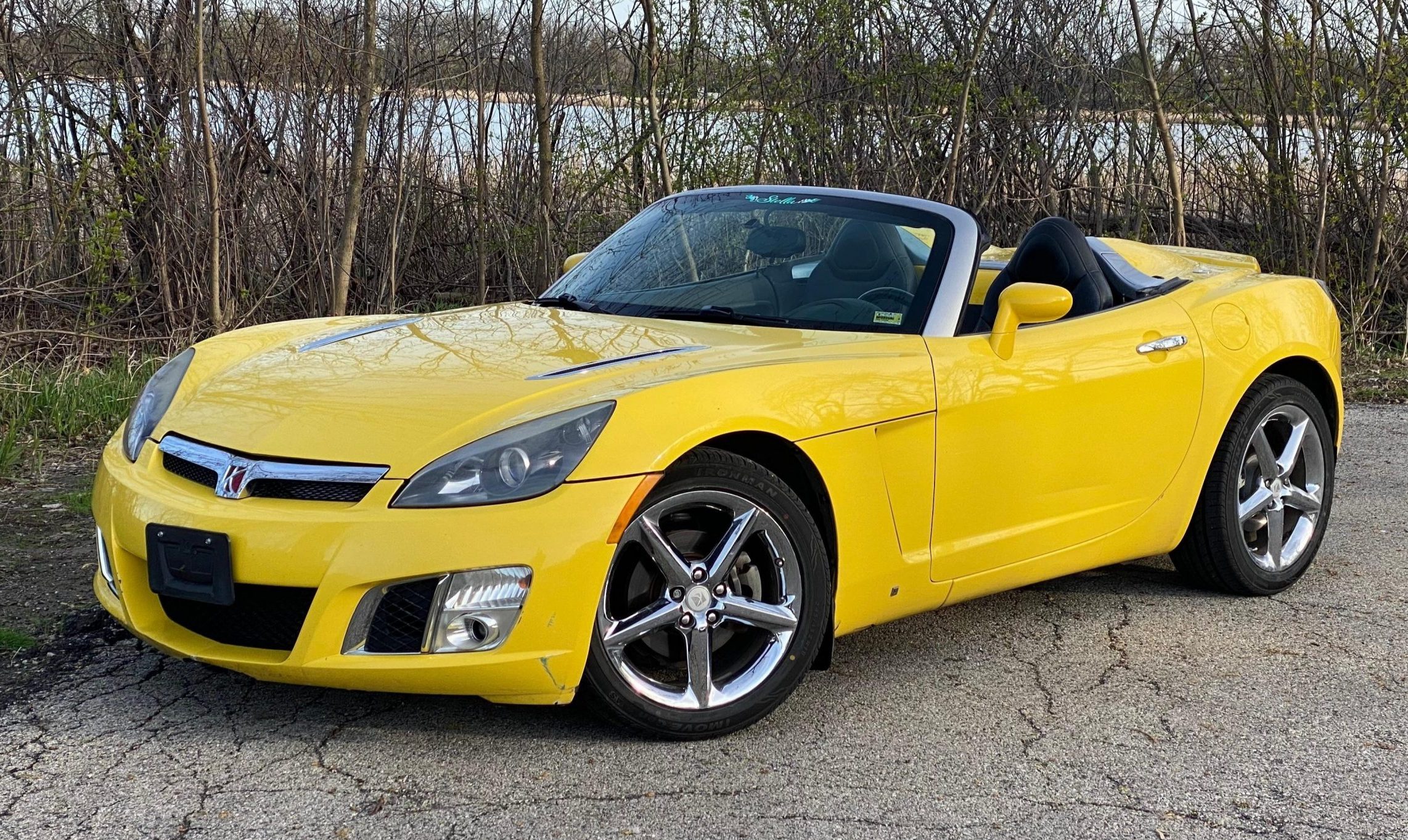
I didn’t get it. I stored these cars with completely dry interiors with their windows rolled up. Mold has no reason to attack my beloved Saturn! Then, I started to think about it. Remember when I said mold needs moisture, oxygen, 40 – 100 degrees, and a cellulose food source? While the interiors of my cars might not be wet, there’s a ton of moisture in the air – enough for mold to take hold.
I did some digging and found out I’m not the only one suffering with the stuff. People who park their cars inside barns sometimes find mold in them after just one season, even though the car was totally dry when it went into the barn. The issue is made even worse when the barn has an imperfect roof. That was the case in the story told by Rob Siegel of BimmerLife. Rob, like me, stores a lot of cars and tries to pay as little as possible for storage. In 2023, he ran into his own mold nightmare.
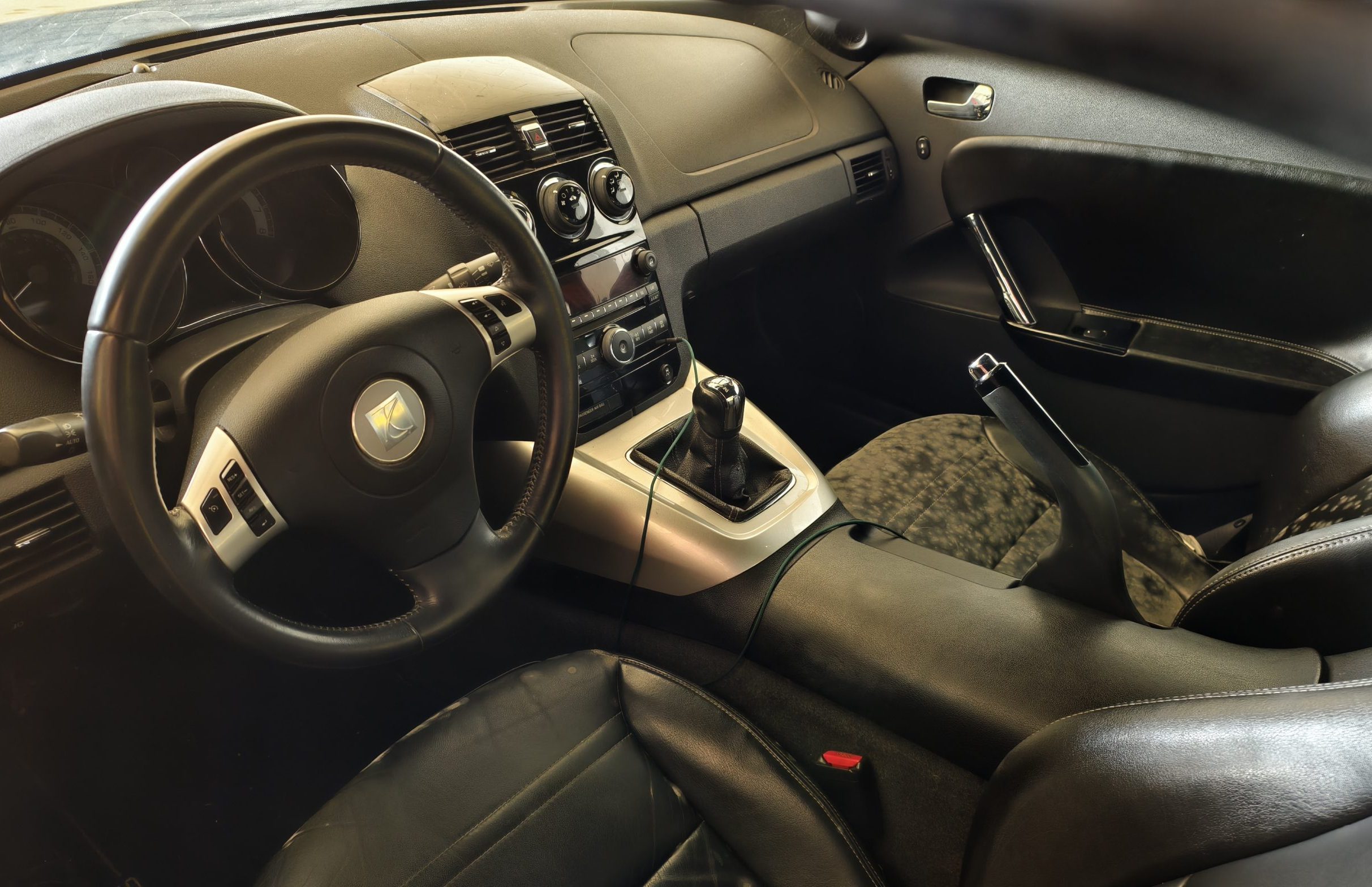
Based on my digging, it seems like there are two major recommendations for mold mitigation. One is to remove the moisture from the air. This can with a dehumidifier or possibly by deploying large amounts of moisture removers like desiccant cartridges or DampRid. Another tactic that seems to work is keeping the air moving around your storage place, so it never really becomes stale. A final recommendation is to simply visit the unit frequently enough to remove any water and to change out the DampRid, if that’s your line of attack.
My storage unit’s power is currently disconnected due to ongoing electrical work in the building, but once the juice is back on, a dehumidifier will be my first line of defense. But until then, in the absence of a dehumidifier, how do I stop mold from growing?


It looks like a lot of folks use desiccant bags inside stored cars, boats, and RVs, so maybe that is something that I will try. In the worst case, I’ll just waste a little money. Ultimately, I’ll use a dehumidifier, DampRid, and an ozone generator to aid in my cleaning.
As for killing the mold in the latest victims, my wife seems somewhat excited to help out. I won’t yuck her yum, so if she likes killing mold, I won’t stop her. I am not at all worried about cleaning up the cars.
What I am worried about is making sure that mold cleaning doesn’t become a regular thing for me. I have only partial confidence in my plan to deploy a dehumidifier, a fan for circulation, and DampRid. Here is where I will turn things over to you: How do you keep vehicles in seasonal or long-term storage from getting moldy?









Thank you all for the suggestions! I think I’m a bit more confident in what I’m going to do now. Electricity to my unit should be restored soon enough. Looks like my list of priorities will be air circulation and reducing moisture in the vehicles themselves. We’ll see what happens over the winter!
Also, sorry, Box Rocket, I have inherited David’s disease. I’m not interested in selling. But I do drive them from time to time, which is why they all have inflated tires and aren’t buried under inches of dust. 🙂
Dehumidifiers are certainly helpful but actual active (powered) air circulation is what is really needed here. I would consider finding a different storage facility if possible. Good luck.
Agreed. Ventilation first.
Your storage building should not be so humid, even when it is humid outside.
I hope you’re aware damprid can be dried out and reused.
It comes in some large sizes too.
Very humid here, so much it just spiked so the AC is on again.
Dehumidifiers make a *huge* difference, and at least one is needed here. If she can’t easily circulate the air of the entire unit, she can at least pull moisture out of the existing air. Only factors are electricity source and somewhere to run the humidifier’s water drain line.
Sheryl is a rare saint for doing the mold job! I personally use a dehumidifier with a built in pump but you can’t let it get cold so you need a heater and that helps, too.
Dehumidifiers will change your Life.
I use a Midea Cube with a built-in pump and I’ve never had to empty it. I would probably recommend at least two for your space since dehumidifiers need to be sized for a space like air conditioners.
An ozone generator might work, but it would have to be big and left on for quite some time due to the size of the space. If there’s a place near you that rents them, give it a shot.
Instead of an Ozone generator how about building a giant Tesla Coil. All those lightening bolts are sure to create mega ozone.
This is the kind of outside the box thinking I come here for!
This is probably a good idea in the short term. Something like rotating it through the cars for a few hours each just to kill as many spores as possible so it’ll take longer for the mold to come back if the moisture level rises. Or one of those chemical chlorine dioxide tablets plus a battery-powered fan, but the smell from those can kinda stick around an obnoxiously long time.
Not sure about the space as a whole – dumping enough ozone into the whole warehouse space to make a difference might be hazardous to neighboring units.
Ronald Finger has a YouTube video where he used ozone to deal with mold in his Pontiac Fiero restoration.
I love his channel!
I borrowed one of these when my old WRX developed a mold issue (both front seats were pretty well covered in it… rears were fine, I suspect oils/dirt from bodies in the seats were to blame). I wanted it for extra insurance, but I have heard excessive ozone use can cause plastics to age prematurely, so you might want to use it sparingly. I have no clue how much it helped, but I never had the mold return in that car (driving it more regularly probably helped… but that first year of COVID was rough).
Since climate control seems to be an issue and a lot of us are on the same page about getting a dehumidifier…what about a compromise? Get a portable A/C, you can run it as a dehumidifier and when it gets hot, you can put it on cool and have a cooler space to work in during those warmer summer months.
I’m convinced that with both you and David, you mean well but you are too optimistic about project cars until you have more than you can realistically work on, then they slowly deteriorate because you can’t spend enough time with any of them to get anything actually nice. I hope that doesn’t sound mean, but I think the only vehicle David has ever actually gotten to be in what I’d consider acceptable shape is the minivan that TUV forced him to actually fix. And how many hours have you spent cleaning mold instead of something productive? You do you, and if you’d rather have a dozen cars in poor condition instead of one that’s great, hey, it’s your money, but this is gonna keep happening.
Looks like I’m late to the party, but I credit Damp Rid (along with frequent rides with the heat blasting) for keeping a moisture problem in my Jeep from turning into a mold disaster. I had trouble finding the hanging bags, so I rigged a little tray to hold a container of the stuff, and made sure to empty it before each ride.
Outside of a shower, the only surface I’ve had to treat for mold (so far!) has been painted drywall; Concrobium did an amazing job at dealing with this.
Once your building has power restored, if you opt for a dehumidifier make sure it’s a real one, not a Peltier-based one. I ended up with a Peltier effect dehumidifier in my office, and while it’s fun to be able to show off all the water it can pull in a week, it’s not a very efficient (or effective) way to remove lots of moisture from the air.
Definitely get a dehumidifier or change locations. We have to run one in our basement during the summertime. That’s what you get for living in the south. It’s amazing how much water it pulls out of the air.
Mold is tough, but this photo just reminds me of how cool Mercedes is. I mean good lawd look at all those cool motor powered goodies and doodads!
I had mold issues in my shop until I put in a dehumidifier.
Ozone kills living things.
That should have been your first stop. Everything else is just a stop-gap solution. But be VERY careful with ozone – don’t use with where there are plants, pets or people. Use it in a car (or even a house, as long as every living thing is removed), and then air it out and you would be fine.
Also be careful because ozone can degrade rubber and also can affect plasticizers. But if you are only running it a handful of times it really shouldn’t do too much to either.
Mold is nothing to mess with, protect your health!!
My niece (among others I know) has had serious health issues as a result of mold exposure. Maybe start scouting for different locations that are more weathertight. That leaking roof can’t be helping plus all of the natural humidity that would be from the lakes nearby.
Calcium chroide ice melter (DampRid) is one of the best moisture absorbers.A crust of reacted chemical will harden on the top of it. You’ll have to break it up to expose more chemical. Saved one of my cars when I’d left a window open in a car wash. Free advice from cheap chemist Uncle Alan.
This. You might have to replace them every month or so.
I should also add that I use the bags so you don’t have to break it up.
Depends of course if cars have air conditioning, with or without filters. If they have, before putting them in storage run them with air conditioner on full, then on recycled air, and make sure you switch off the air conditioner a couple of km before you park up, still recycling the air. Try not to fart during this stage. If you do it will hang around.
Do this in winter with heat on too.
Dries out the air and the filter helps catch spores. You can usually get anti-mould filters, but they make the car smell like a public loo that has just been cleaned.
I know damp air gets in when you get in and out, but just the drying, filtering effect usually helps.
Without air conditioning, more difficult — knew someone who would carry a small barbecue to the car and put it in on a metal tray, and use aromatic twigs. Claimed it worked and never lost a car to fire.
Make sure you ventilate afterwards, carbon monoxide is a killer and heavier than air.
Also basic tip is to check seals on windows, especially back windows. Little drips into the boot (trunk) get in un-noticed but add dampness.
The fart warning was perfect.
Some pure essential oils may impair mold also
Not an area I’ve researched though.
I know you mentioned it in your post but a damp-rid bag in every car will cut this issue out immensely. I used 3 when I had to put my house belongs in a Pod for a year and they worked great. Just note, youre likely better off putting the bag someplace on the floor since as water gets in the bag it will get heavy for whatever you are hanging it on – I.e. Dont put it on your rearview mirror – use a grab handle or something.
If you own the mini warehouse, maybe try an exhaust fan? It works in the bathroom. (No, I wasn’t thinking about the diarrhea story.)
In the semi-tropics of Miami we had a trick. Almost everything mildews there, your home, the outside of the roof, pool deck. I think even the mildew mildews. An old cracker taught me a cool trick. It works on boats, airplanes and even cars. Take a shallow plastic pan, something akin to a cat box. Pour about 2-3 cm of ammonia in the pan. Park whatever is beginning to become infested with mildew in the sun for a day or two with all the windows closed. The gradual vaporizing of ammonia kills the mildew, in all the nooks and crannies.
After a day or two, open the doors and windows and let it air out after removing the pan. It will have killed all the mildew and whatever insects or small rodents that inhabited your vehicle. You can save and re-use the ammonia. Cheap and surprisingly effective. What do you have to loose, try it out.
Had never heard this, Thanks for the share!!
Enough ammonia will corrode wood possibly other things like aluminum.
Naptha moth balls may help.
I open just the lid so they last.
Repels raccoons.
Honestly, I have used it on airplanes mostly. I had quite an infestation on the two I bought in India. They were in Juhu, which may as well put them underwater. There where actually mushrooms on a spot I the carpet. Cleared it right up. Now aircraft are almost entirely made of aluminum and I had no issues. Mold itself will cause surface pitting on bare aluminum. The floatplane looked like the one from “Waterworld.” Took a lot of cleaning.
It may be in the materials and the application.
I was using it as vapor to deter critters and the dramatic damage to metal was primarily inside a vacuum cleaner.
It was a sophisticated one, German I think, so it may have been magnesium or some peculiar alloy.
Using it as a cleaner and removing the chemicals quickly might be an entirely different effect.
This did happen separated by wood and plaster walls though, so caution about the fumes is warranted.
I have a lot of aircraft grade aluminum for someone without any aircraft, but I’ve never used it on those sheets.
I bet we have the same overpriced German vacuum cleaner, cost more than my first car. In the Navy I was in the Engineering side test flying aircraft and doing accident investigations. We pulled up one of the then new CH-53E’s that blew up off San Clemente Island, transmission failure lifting an APC for test. What amazed me was the rudder pedals. They are cast magnesium, no special alloy. All that was left of them after a week or two in the salt water was the paint, making a hollow model of the what used to be a rudder pedal. Magnesium corrodes quickly if the outer surface is scored. Aircraft aluminum is actually a sandwich of magnesium and aluminum (alloyed with copper as well). Magnesium Is the outer layer, as when it makes its initial exposure to oxygen, it makes an extremely hard oxide layer. Just when you scratch it, it exposes the unprotected metal below. Kind of a bad choice for the innards of a vacuum, always having something abrading the interior.
Not cheap but very good, the indoor ones are cheaper (ish)
https://www.carcoon.com/product-range/vehicle/outdoor/outdoor-carcoon/
I agree with others on circulation, the most recent instance I had of a mold problem was storing our window A/C units for the winter(we have central A/C but it can’t keep up and horribly inefficient).
I stored them in giant rubbermaid type bins in the toolshed, 1 of them the bin wasn’t sealed well so moisture got in, but was sealed well enough that moisture didn’t feel like getting out, there was literally a puddle in it when I went to break them out, the entire unit coated in mold, and not even any fabric for it to attach to.
The other unit was completely sealed in it’s bin so did ok, but I got to thinking none of the tools in my toolboxes get modly or rusty, so the next fall I just got a plastic shelf and tossed both the units on the shelves, next summer they were both clean and dry from sitting in the dry air all winter, easy peasy. And we’re in NC where it can get muggy in the spring for sure.
Also part of this is to mention that it’s not just seats you may want to check, may want to get check in the ducts of at least 1 car to be sure the stuffs not sitting in there ready to give you black death next time you turn it on.
I say this without any judgement: only own as much as you can use and maintain regularly. If used and stored as intended, the mold will not have the opportunity to proliferate to this extent.
Unless you have Leno money, these things belong on the road 2-7 days out of the week, not in a warehouse.
Hoarders gonna hoard!
I’ve only had modest mold issues… the spare tire cover in my NA Miata seems to get it now and again… I assume the trunk got wet inside from the prior owner (the gasket seems ok).
Happily, it only seems to happen on the cover (which I wipe down with bleach water once a year or so) and not the carpet, etc… but if I don’t go into the garage for a while, the whole place has that musty smell.
It’s pretty dry here in general, but there are no operable windows in the garage: it’s pretty tight. I’ll see if I can put a fan on a timer in there just to move the air around.
Thanks to Mercedes for bringing this up (again) and everyone for chiming in w/suggestions. 🙂
Silica gel desiccant is widely available in bulk, and cotton drawstring bags are, too. Buy a lot. 25 pounds of silica gel is under $200. That’s a lot, but you probably need at least that much.
If you use any desiccant, it’ll load up with water. Get the kind with indicating beads so you know when it’s saturated.
You recharge silica gel by heating it in an oven at 200 degrees for an hour.
You might end up spending your weekends recharging your desiccants instead of driving your vehicles.
For some Silica gel dessicant, if you have a friend in IT that installs servers in datacenter, you could ask him to collect the bags from the crates for you… There’s always some in a server crate, and they usually all end up in the dumpster.
It’s always a good idea to reuse what you can, but it would take a lot of servers to get 25 lbs of silica gel. A four ounce packet is the largest I’ve ever found. Most are one ounce or less.
I collected it for years. My collection was eclipsed by my first purchase.
If you don’t get in there often, put the desiccant bags in a bucket. We had some electrical control cabinets with desiccant bags in them that were stored outdoors, when they were opened up the desiccant moisture adsorption had exceeded it’s capacity and they had burst, leaving a liquid gel all over the bottom of the cabinets.
Hang socks filled with cat litter on the walls. It will suck up the moisture also put one under each seat and on the dash of a closed car will help as well.
This sounds more like a remedy for the 6 months of diarrhea story lol
I wanted to write this. While it doesn’t absorb water as well as silica gel, it is very easy to use, safe, doesn’t smell and can be vacuumed out if spilled. I’d use the ‘tofu/soy bean’ sprinkle style cat litter.
Put it in a flat pan/container on the floor of each car.
Closing air vents after parking also can help. And what someone wrote ; make sure your air-conditioner was off 5-10 minutes before you park. I even do that every day. Maybe not 10 minutes, but 2 minutes before arriving for sure. You don’t want to have some cold leaky wet metal thing under your hood every time you finish a drive.
Yeah, DT probably did this in his “cat” Jeep ha ha…probably had them in the shower too while eating spaghetti
Here’s something to figure out: How to keep the strawberries in my fridge from growing mold within less than a week after purchase. I like to slice up 2 or 3 a day to put on my yogurt, but I always have to throw away the last 5 or 6 of them due to mold.
Happens with blueberries and blackberries, too. Not so much with raspberries, but occasionally.
Mold sucks.
How old is your fridge? Up until I purchased my house 5 years ago I had lived in rental houses that came with fridges, generally of the old variety. I became used to food becoming moldy in a certain period of time. When I bought my house, I also finally got to buy a new fridge. I started noticing that food lasted a lot longer before it started getting moldy. Note it’s not any climactic change – I live in very humid eastern NC, and where I purchased my house is actually really close to a large body of water, so it’s the most humid place I’ve ever lived.
It’s a Maytag fridge and we bought it about 16 years old. However, it fits into an enclosed area and would be very difficult to replace.
I do take it out and clean it once every year or so.
Check and replace seals make sure to defrost and wipe up every bit of moisture. Keep it in the container with air holes and in the fruit and vegetables cubby at the proper setting. If you don’t have that I have a green Tupperware like container that does keep my produce fresh longer
They are kept in the container with air holes and in the fruit and vegetables cubby at the proper setting. The only way to buy strawberries in my area is to buy a 16 oz. tub of them. They come from Watsonville, CA all the way to where I live, so who knows? By the time I get them, it’s probably been a month or more since they were picked.
I don’t have Tupperware, but we do have clear glass Pyrex bowls with rubber lids. I hadn’t thought of trying those.
There are some bags and containers supposed to inhibit spoiling.
Green bags.
Rotate the strawberries everytime you access them. We buy a set of 3 at a time, and I roll all three into an empty set of three baskets every time after I pick out the oldest (softest) ones on top. The longer they stay against each other at the same exact spot the quicker they go bad. Even spreading them out and putting them back in the same basket will help.
Switch to 4 or 5 problem solved
4 or 5 what?
4 or 5 strawberries at a time instead of 2 or 3. Sorry
The only strawberries I can buy in my neck of the woods come in 1 lb. tubs and travel from 2400 miles away.
Or did you mean use more strawberries every day to use them up faster?
I guess I could try that.
Thanks for the suggestion.
Very zen
I’m told to lay towels on top, then flip them over to get moisture off the berries.
Seems to help.
Too many comments to look through and see if I’m being repetitive – A few years back when we first bought our house, there was mold that the inspector missed. I bought something at Home Despot for $8 or so, liquid in a spray bottle that claimed mold would never return! Well, it turned out to do the trick. But $8? I don’t think so. I read the label: Active ingredient is Sodium Carbonate (not bicarbonate), AKA washing soda. It’s something like $4 or $5 for a big box of it these days. I mix my own, The box just ran out after 15 years, and only because I put it in the laundry once in a while. Wherever I’ve sprayed it, the mold indeed never comes back. The caveat is that when it dries, it leaves a bit of chalky crust. It’s easy to clean that up though.
Penicillin and related molds have actually sent me into anaphylactic shock, so when I see mold the first thing that comes to mind is ”if I eat that will I die?” So far tasty molds have not killed me.
Aside from that, my book and camera collecting friends swear by gamma rays.
Ethylene oxide is a good mold treatment but it is also a highly toxic, flammable, and known human carcinogen, so its use is restricted to controlled industrial and medical settings with proper safety measures, including aeration to remove residues. It is not a safe or practical solution for home or general use to kill mold, according to the Agency for Toxic Substances and Disease Registry.
So gamma rays might be the way to go,
The DIY method is to leave some Colbalt 60 in the car for a while. As I recall lead suits and fancy storage containers are usually required, so maybe a professional service provider is called for.
There used to be a place on New Jersey that would gamma ray anything that fit on a little conveyor. I have no idea if they are still around, my art conservation friends are no longer around to ask, but anyone that needs to conserve a pile of damp medieval underwear, a manuscript or the like would know who to ask.
I’m sure you could find a company that would find your use case amusing, STERIS has facilities all over.
Hah, I work for Steris in the Northeast. I’ve also removed mold and mouse poop from a 1956 Lincoln I bought. It’s a messy job, but when it works, it is nice after. Nothing to wonder about while driving.
I am amazed at the breadth of the Autopian readership.
Yes, it’s the only place where the comment section is decent and humorous. I do try to read it with my glasses on, and while having a coffee.
Read this in the morning without glasses or coffee, and wondered how a moose got into a 56 Lincoln.
Now I read it again, and realized that mouse antlers are much less substantial.
Mice and Moose can total a vehicle these days. Back then, there wasn’t much for mice to eat as far as wiring. Nowadays though…you can brick a car by chewing on stuff behind the dash or under the hood. I prefer to snack on Moose over wires though. They make great chili after the logging truck clips them.
I run a dehumidifier all summer long witha chunk of garden hose dumping outside.
Mold isn’t what I’ve been fighting, I just don’t want my tools to rust. But it serves both purposes.
While dessicant is the best for non-powered removal of humidity from interiors, if you store any tools, buy a couple boxes of chalk from the dollar store and toss a few sticks in each drawer to absorb moisture.